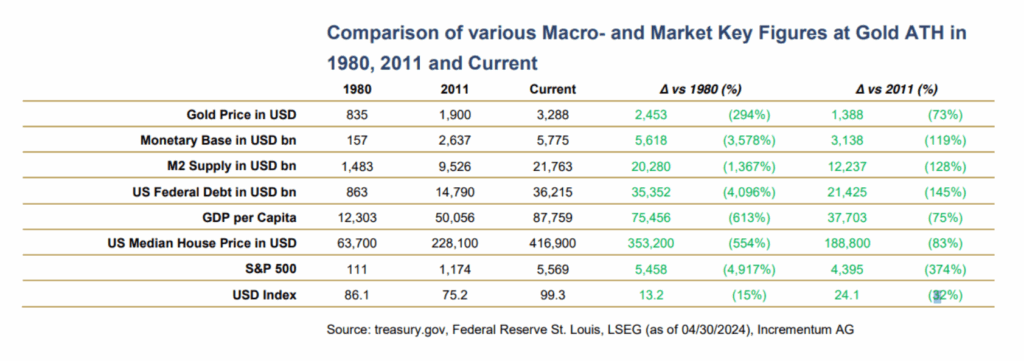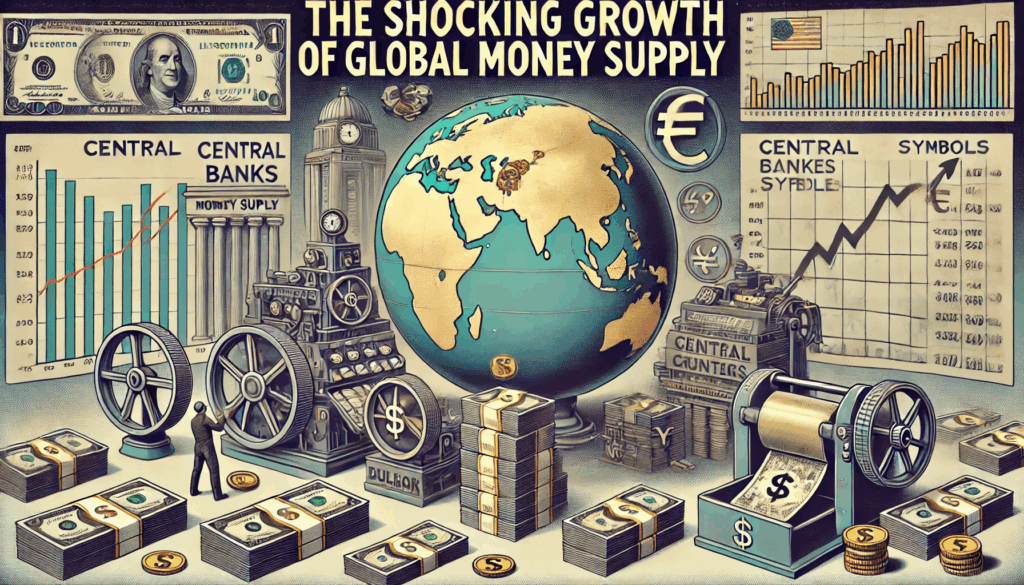Money Supply Has Exploded
Over the past few decades, there has been a significant increase in the world’s monetary base. In the United States, the M2 money supply—which includes cash, checking deposits, and easily convertible near money—has surged from $1.4 trillion to over $21 trillion. This represents a tremendous leap. Concurrently, the US federal debt has skyrocketed from $0.8 trillion to $36 trillion in just 45 years. This trend highlights how rapidly money is being created and injected into the financial system.
Debt Keeps Fueling the System
This newly created money isn’t sitting idle; it’s being loaned out repeatedly, which increases the total credit available in the system. The government plays a key role in this process by continuing to borrow and spend, which helps to sustain economic growth—even if only marginally. If government spending were to cease, economic growth could likely slow down or stop altogether. Therefore, debt has become a crucial tool for maintaining economic activity.

Source: IGWT
Asset Prices Haven’t Kept Pace
When examining the changes in house prices (see image above), it’s clear that while they have increased, they haven’t done so at the same rate as the money supply. The median house price in the US has risen from $63,000 to $416,000—an increase of about 554%. In contrast, the money supply has increased by 1,300%. Meanwhile, federal debt has grown by an astonishing 4,000%. This discrepancy indicates that asset prices, such as housing, have not kept up with the volume of money injected into the system.
🌟 Searching for perfect balance in investing?
Mi AllCap GOLD is here to solve the big questions:
🔶 Where should you invest in equities? 🔶 How to stay calm in volatile times?
✅ 25% each in Large, Mid, Small Caps + Gold
✅ Strongest stocks picked in each segment
✅ Gold as your hedge when markets tumble
✅ Monthly rebalanced – rotational, momentum strategy
Don’t just diversify — balance wisely.
Equity Markets Are Outperforming
The S&P 500, which represents US stocks, has experienced far greater growth than many other sectors of the economy. Since 2011, the monetary base has increased by about 119%, while the S&P 500 has soared by 374%. During the same period, US housing prices have risen by only 83%. This data suggests that a significant portion of the new money has flowed into the stock market, propelling it ahead of other asset classes.
Gold Has Not Caught Up
Gold, often viewed as a hedge against inflation and money printing, has not performed as well. Since 1980, it has increased by only 294%. Since 2011, its rise has been just 73%, which is much lower than the gains seen in stocks and even housing.
Are equities overvalued? Will gold and housing eventually catch up? Share your thoughts in the comments below, and if you found this article useful, please SHARE it with your friends!











